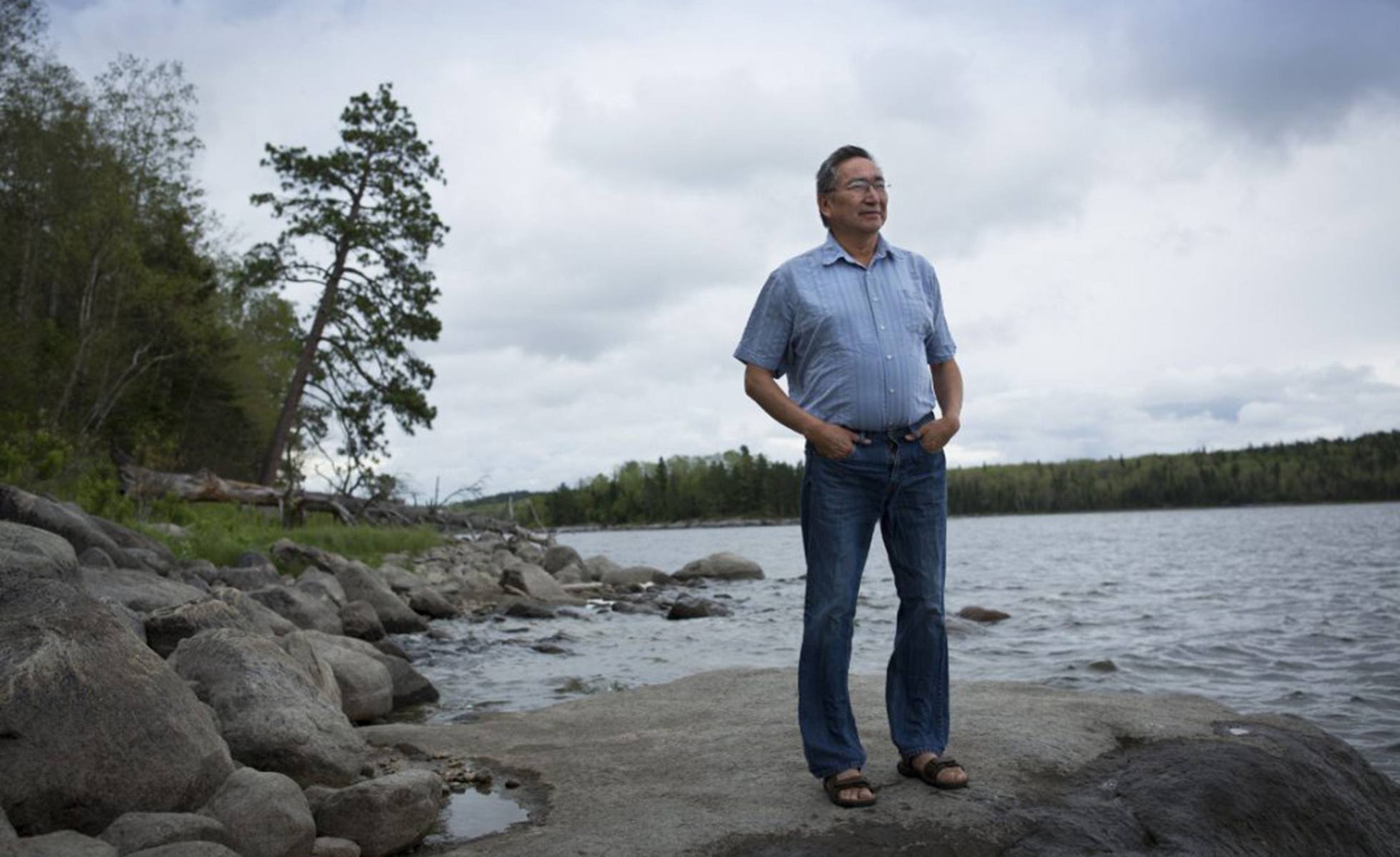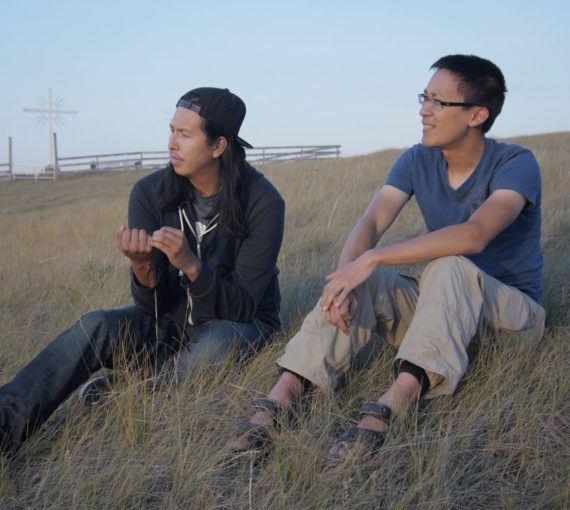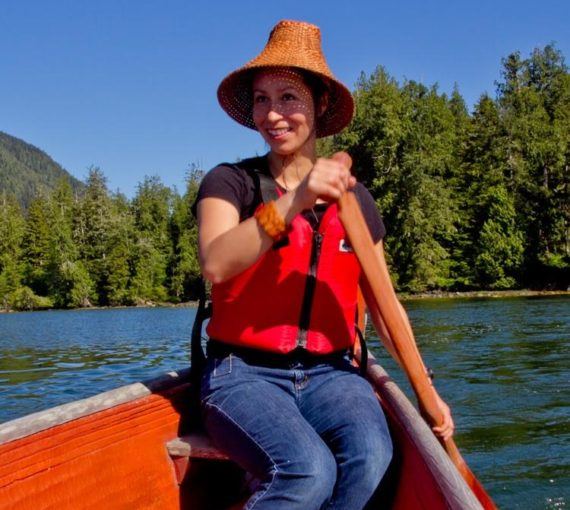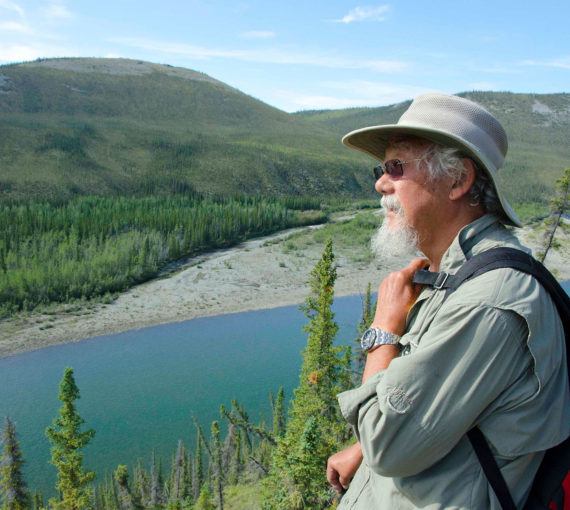
Grassy Narrows Chief Simon Fobister
I was honoured to be a part of the David Suzuki Foundation team that attended Asubpeeschoseewagong Netum Anishinabek Grassy Narrows First Nation territory on June 28, 2017, the day after the provincial government committed $85 million to clean up mercury contamination in Grassy’s Wabigoon River.
As we drove into the community, I was humbled and awed by its majestic beauty. The trees stood tall and proud all around, like ancient, powerful ancestors welcoming us into their territory. I felt small and insignificant, convinced that the fight at Grassy Narrows is a spiritual mission, not an environmental undertaking.The community heard of the $85 million commitment prior to our arrival. But they were guarded. They’d heard empty promises before.
I chatted with locals gathered to see David Suzuki. They told of the community’s aspiration to open a birthing centre, and how the project faced insurmountable barriers — the ongoing water issues and concerns for the health of the women and infants who would use the service. They said their traditional language is alive and well in the community. Any First Nations person, myself included, would interpret that to mean that the Grassy Narrows people have a strong foundation to support their community for whatever perils lie ahead. Their resilience, hope and love for their people, their community and the land was evident in every conversation.
In his brief speech, David Suzuki recognized the Ontario Liberals’ announcement of $85 million to clean up mercury contamination that’s been a serious environmental issue for this small community since the 1960s. He praised the people for their commitment to a respectful relationship with the land and acknowledged the interconnectedness of all life on Mother Earth.
It’s hard to fathom what can be done with that much money. Grassy Narrows members want a centre dedicated to healing their people. They want information on the science — how the waters will be cleaned has never been shared with them. English is not many locals’ first language, so communications can’t be in technical jargon. They want information that everyone can understand.
The fight at Grassy Narrows illustrates a need for a paradigm shift, one that sees all people living in Canada learning to value all life on Mother Earth as much as we value human life.
When community members spoke of the impact environmental degradation has had on their entire way of life, my heart ached. Those who faced neurological disturbances from mercury poisoning seemed to accept their fate — that disability and an early death may be pending. Yet they did not focus on themselves. Their concerns focused on how losing their traditional lifestyle of hunting and fishing erodes the fabric of their Anishinabek society. They worry not only that humans, the river and the fish are sick, but that wildlife are also sick and disappearing at alarming rates. The $85 million might clean up the river, but they wonder what will heal wildlife suffering habitat loss from persistent logging and the ongoing issue of contamination. They asked David Suzuki if mercury could poison the plants and trees.
These questions and comments instilled both utter sadness and tremendous Indigenous pride in me. These are good Anishinabek people, who worry equally about the lives of bears, moose and caribou as they do for their children and grandchildren. That’s what connection to the land looks like. That’s what sets Indigenous people apart from the mainstream notion of economic prosperity as a tantamount concern. To understand the interconnectedness that exists within nature requires caring as much about the lives of our furry, four-legged and feathered relatives as we do for people.
After the school’s graduation dinner, our night ended with traditional teachings around a sacred fire. We laughed and told stories. During his Grassy Narrows fishing excursion, David Suzuki caught a 90-pound sturgeon, which thrilled some of the locals. The sturgeon is a clan for the Grassy Narrow Anishinabek people, one said to embody leadership skills. Some elders and other locals believed that the sturgeon, seldom seen in local waters anymore, showed itself to David Suzuki for a reason. They saw this as a spiritual message that the fight was not futile and that prayers for the water were being answered. Overall, it was a great day.
It was Canada Day weekend, so everywhere in Kenora, I saw Canada 150 birthday advertising. One sign in particular caught my eye: “#Stand Up for Canada.” What does that mean in 2017? What is Canada without moose, caribou, plentiful forests, ducks, wolves, bears, bees, butterflies, fish, lakes and oceans? We celebrate and protect Canada’s multiculturalism through policy and law, but maybe it’s time to start celebrating and protecting our biodiversity in a much more meaningful capacity. The fight at Grassy Narrows illustrates a need for a paradigm shift, one that sees all people living in Canada learning to value all life on Mother Earth as much as we value human life. The living things that collectively constitute the environment must be given proper weight in all our considerations.
I’m grateful for Premier Wynne’s commitment to support Grassy Narrows. But I want to respectfully urge all Canadians to force their provincial and federal governments to act responsibly when making decisions that will impact the environment. This includes provinces issuing licenses to companies, creating short-term employment and knowingly causing long-term devastation to the geographic regions and resources they’re exploiting. There is no economic value added to our society when corporations are allowed to devastate the environment in an effort to make profit, when in the long run, we all end up paying for the clean-up — in this case, to the tune of $85 million.
We all pay for this short-sightedness. The people at Grassy Narrows are paying for it with their lives. And still, they stand up for Canada, in a way the rest of us can only hope to emulate.


